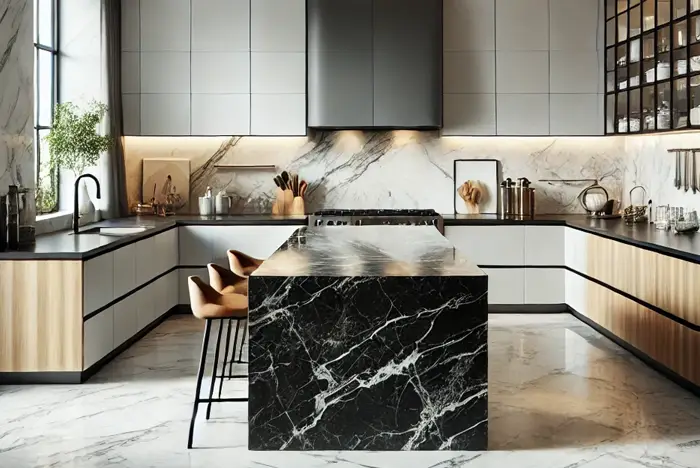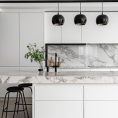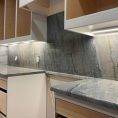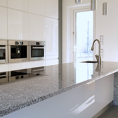How to Mix Countertop Materials in One Space

Mixing countertop materials is a fashionable and functional way to add contrast to your kitchen or workspace. When you mix many surfaces, it will give you a distinctive appearance along with enhanced usability as well as enhanced toughness. Here’s how to mix multiple countertop materials successfully in a single space.
1. Why Mix Countertop Materials?
Combining countertop materials introduces aesthetics and multifunctionality into your kitchen. Here’s why it works:
- Interplay: Mixing various textures and colors add dimension.
- Practicality: Some materials are designed for specific jobs, like butcher block for prep work and granite for sturdiness.
- Cost Effectiveness: You can use high-quality materials for the important parts and cheap material for the rest.
2. Best Countertop Combinations
Not all materials play nice with each other, so picking the right pairing is important. Different combinations that work well include:
- Quartz & Butcher Block
- Butcher block provides warmth and a natural feeling, while quartz provides for durable and low-maintenance.
- Best for: Food prep stations or islands with a dedicated baking area.
2. Granite & Stainless Steel
- Granite is heat-resistant and beautiful, while stainless steel lends a sleek, industrial aesthetic.
- Best for: Commercial-style kitchens or high-heat cooking areas.
3. Marble & Concrete
- Marble will give you a timeless luxury feel, whereas concrete brings a modern industrial vibe.
- Best for: An eye-catching island (marble) that is surrounded by a durable workspace (concrete).
4. Soapstone & Quartz
- Soapstone is non-porous and naturally antimicrobial, and quartz has a wide range of patterns and colors.
- Best for: Farmhouse-style kitchens featuring both traditional and modern components.
3. Mixed Countertops Placement Techniques
When working with many materials, placement is everything with a cohesive design.
- Define Work Zones
- Food Prep Area: Butcher block is sanitary and easy to chop on for meal prep.
- Cooking Zone: Use heat-resistant granite or quartz around the stove.
- Serving/Entertaining Area: Consider a striking, luxe material such as marble.
2. Create a Statement Island
An accent countertop on your island can be a showstopper.
For example, a waterfall island in marble with surrounding types of quartz countertops.
3. Use a Seamless Transition
- Combine materials with complementary colors and textures to keep things cohesive.
- If you wish to separate them in a more abstract way, you can use edges or other unique shapes.
4. Styling Tips for a Unified Look
- Stay in a consistent color palette: Choose colors that complement each other in order not to clash.
- Balance textures: Free your home from dull surfaces and mix matte with polished finishes.
- Use accent pieces to tie the design together: Cohesive cabinetry or backsplash elements can help to unify the space.
A combination of different countertop materials can turn your kitchen into a functional yet aesthetic area. With thoughtful layering in terms of appearance, strength, and location, it is possible to develop a well-balanced design that not only looks great but also works nicely. From pairing quartz with butcher block, to marble with concrete, the secret lies in intentional contrast and thoughtful coordination.






